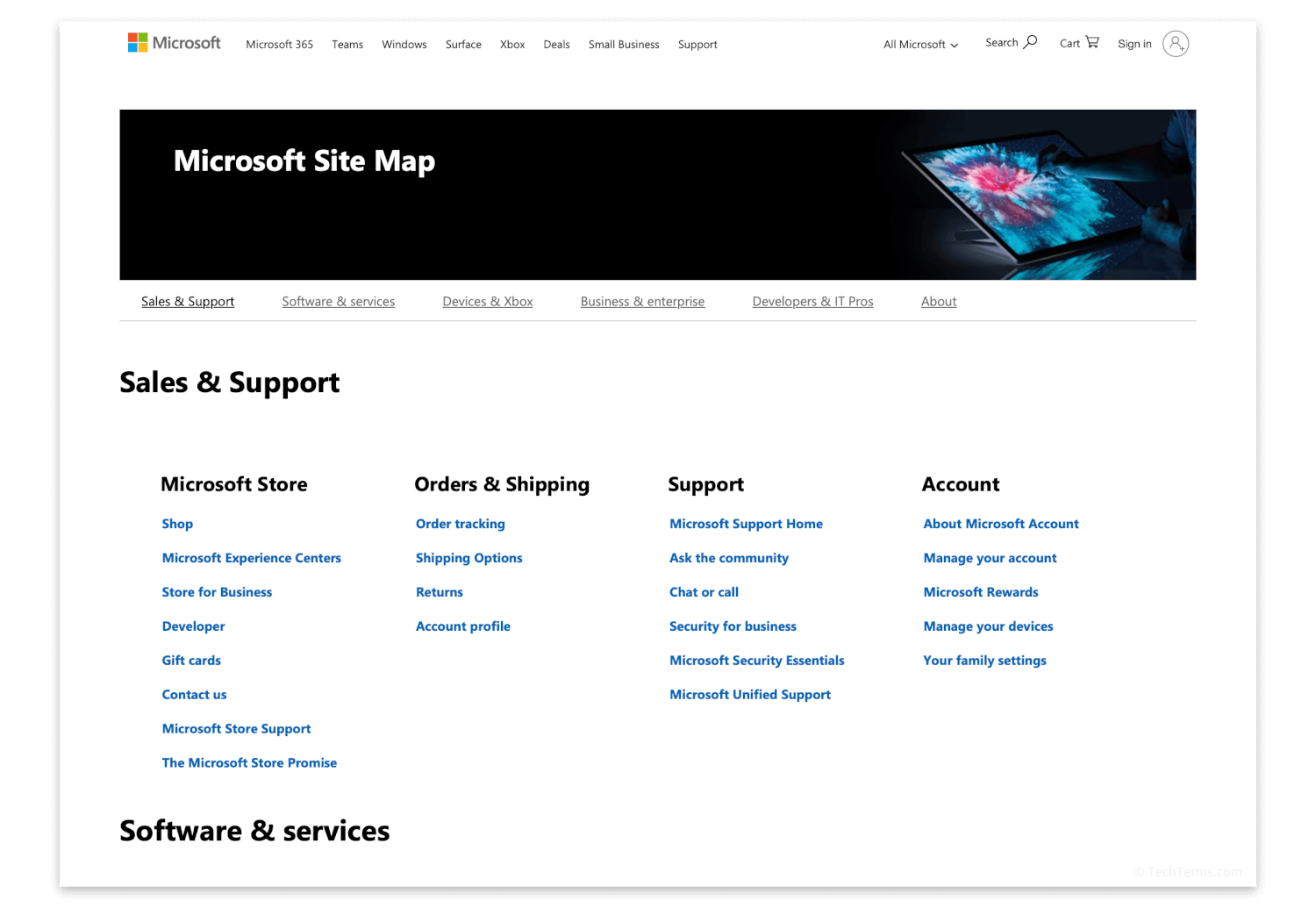Sitemap
A sitemap (sometimes spelled "site map") is an overview of the webpages on a website. It typically includes a link to every page on the website, or at least those pages the webmaster considers important. A sitemap can help visitors to a website find a specific page while also providing web crawlers with an outline they can use to index it efficiently.
There are several kinds of sitemap, each serving a different role in website development and management. First, web developers often use sitemap diagrams when designing a website to lay out its structure, visualizing how to create links between pages and organize pages into directories. Later, the developer can use these sitemaps' structures to create human-readable sitemap HTML pages that present visitors with a structured outline of the entire site, with hyperlinks to sections and specific pages. Finally, they can make a sitemap file (designed for SEO purposes) that lists a site's pages in a programmatic and structured way.

Web crawlers access a site's sitemap file to know what URLs they need to index, which helps make crawls faster so that pages appear in search engine results sooner. Sitemap files may be as simple as a text file listing the URL for each page, but many sites now use XML documents based on Google's Sitemap protocol. The Sitemap protocol defines XML schema that includes optional metadata like when the page was last updated and its priority relative to other pages on the site. CMS systems often generate a sitemap automatically, updating it whenever new content is published, although some webmasters prefer to update their sitemaps manually.
 Test Your Knowledge
Test Your Knowledge